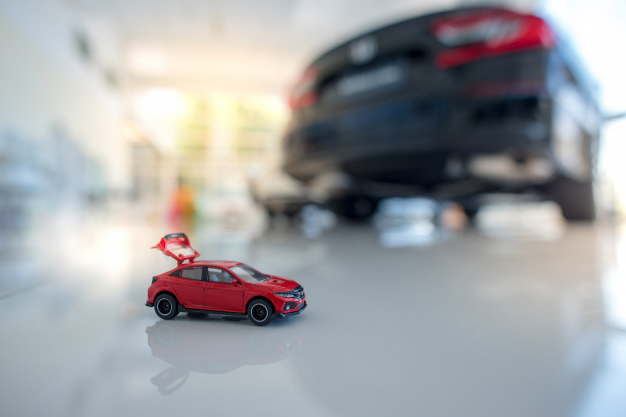A good auto insurance policy can protect you and your car in the event of an accident. When you’re choosing a plan, there are many factors to consider.
When to Add Your Teen to Your Auto Insurance Policy
Lucky you. Your teenager is now old enough to drive and has brought home an application for a learner’s permit. You know what that means. Your teen will soon need automobile insurance. According to insurance companies, the 16-to-24 year-old set are the highest risk drivers on the road. That means insurance will be expensive. There is some good news, however. With a little information and planning, you may be able to save hundreds of dollars.
You may not want to add your teen to your policy immediately
Once your teen has a learner’s permit, your insurer may insist that the teen be added to your automobile policy immediately, and that you start paying additional premiums. If so, you may be stuck.
However, many insurance companies are more lenient where learner’s permits are involved. In most states, learner’s permits are issued for a period of 60 to 180 days. During that time, your teen can only operate a vehicle if an adult with a valid driver’s license is in the car. Additionally, some states only allow teens to drive during daylight hours.
Because of these restrictions, some insurers consider the teen with a learner’s permit a low-risk driver. Your insurer may still insist that your teen be named on your automobile policy, but it may only require a nominal or reduced premium while the teen is operating under a learner’s permit. Other insurers are even more lenient, and may not charge any additional premium at all while the teen is operating under a learner’s permit. They may not even require that you notify them when your teen gets a learner’s permit. Waiting that additional 60 to 180 days before adding your teen to your policy means you can avoid two to six months’ worth of additional premiums. Check with your agent to determine where you stand.
What should you do once your teen’s license is issued?
If you haven’t already done so, it is generally advisable to add your teen to your automobile policy once a driver’s license has been issued. You might ask: But isn’t my teen still an insured under my policy? Technically, yes, and if your teen has an accident your insurer will likely cover the claim. However, at that point the insurer can charge you retroactively for coverage on your teen from the date that your teen became a licensed driver. That could require you to come up with a substantial lump sum of money to keep your policy from lapsing.
Would it be cheaper for your child to have an individual policy?
Sometimes it is less expensive to set your teen up with their own car and their own insurance policy than to add them to your own. If you drive expensive cars, it will be costly to add your teen to your policy, because expensive cars are expensive to fix. If, on the other hand, you buy your teen a used economy car, waive the collision and comprehensive coverage, and set your teen up with his or her own policy, you may come out ahead--even though you have to purchase another vehicle. The outcome of the analysis may also depend upon what kind of policy you have. Some parents have access to safe driver discounts and multiple car discounts. It is still expensive to add your child to your policy, but with these discounts it is at least manageable. Your teen would not have access to those discounts on their own.

Auto Insurance for 20-Somethings
Typically, the biggest automobile insurance issue for younger drivers is affordability. Unfortunately, single drivers under 25 years of age are the highest-risk drivers under age 70, and men in the under-25 age group are higher risk than women. There’s nothing you can do about that. With high risk comes high insurance costs. However, there are a few things you can do that may result in more affordable premiums for you. Following are a few suggestions.
Raise deductibles
Your collision and comprehensive coverages have deductibles. If you raise your deductibles, your premiums should come down, but you also take on more risk. If you have an accident, you will have to pay more of the repair bill before your insurer begins to pay. If you are willing to take on that extra risk, your insurer will typically reward you with a lower premium.
Drop collision and comprehensive coverage altogether
Let’s say you are doing what you can to make ends meet. The car you drive is ten years old. It runs pretty well, but it has some rust and the interior has seen better days. According to the Blue Book, it’s worth about $1000. Currently, your auto insurance has a $1000 deductible. If the car is stolen, your insurance company will reimburse you for the value of the car, less your deductible. In this case, that adds up to nothing. If you get in an accident, you will be responsible for all repairs up to $1000, and the insurance company will reimburse you for any repairs over $1000, up to the value of the car. Again, you will receive nothing. So why pay premiums for collision and comprehensive coverage? In this scenario, you shouldn’t. If you are driving an older car, take a look at its value and your current deductibles. Run the numbers yourself, or get help from your agent. It may be time to drop your collision and comprehensive coverage, and save some money on premiums.
Choose a safe car
A four-cylinder sedan with automatic seat belts, airbags, and antilock brakes should always be less expensive to insure than an eight cylinder sports coupe with no safety features at all, even if they are the same age and similarly priced. The style of the sports car, along with the horsepower and lack of safety features all signal high risk for insurers. If you are a younger driver and insurance costs are an issue, then resist the urge to buy that big shiny gas-guzzling hotrod. Select a car with more safety features that is rated in a lower risk category. See your agent for recommendations.
Stay home
If you live at home with your parents and continue to drive their cars, you’ll be eligible to remain a “named insured” on their policy. If your parents have safe-driver and multiple car discounts, they will probably get a better rate than you could if you owned your own car and purchased your own policy. However, you should consider all the options. Depending upon your driving record and the types of cars that your parents own, they may see a significant drop in their policy premiums if you are taken off of their policy. In some cases, the family as a whole might do better by setting you up with an older model car and an individual policy without collision or comprehensive coverage.
Use multiple policy discounts
Some insurers will give you a break on your auto insurance if you elect to buy your homeowners insurance or renters insurance from the same company. In no-fault states, some companies will allow you to waive personal injury protection in exchange for a discounted premium, if you have health insurance with the insurer. Ask your agent whether you are eligible for any multiple policy discounts.
Don’t be frightened into buying more insurance than you can afford
If you are like most 20-somethings, you have not amassed your fortune yet. You might have a few bucks in the bank, your car, and some other personal possessions, but you don’t have significant assets that could be seized if you were sued following a car accident. If that is your situation, then the minimum auto insurance coverage required by your state’s laws, or by your lender, is probably sufficient to protect you in the event of an accident. Statistics show that the vast majority of accident claims fall within those coverage amounts and that is why they are chosen.
If you do find yourself in one of those rare situations where you owe an enormous amount of money because of an auto accident, you are basically “judgment proof,” because you have no real assets for anyone to take away. Accordingly, you may wish to avoid paying high premiums for high levels of coverage when there is little or no potential benefit. If, on the other hand, you are a 20-something who has significant assets, then you should seriously consider coverage that will minimize your exposure and protect you, your family, and your fortune. Your agent can give you guidance.
Get married
While no one should get married merely to save money on car insurance, you should know that when you do make your vows, your insurance company will likely send you a wedding present in the form of lower premiums. Married drivers are generally considered less risky than single drivers.
Hold out to age 25
Although you have no control of your age, take heart. When you reach 25 you hit a milestone in the eyes of most auto insurers. For most insurers, when you reach 25, you step into a new, slightly lower risk category. All else being equal, that means a lower rate.
The responses below are not provided, commissioned, reviewed, approved, or otherwise endorsed by any financial entity or advertiser. It is not the advertiser’s responsibility to ensure all posts and/or questions are answered.







